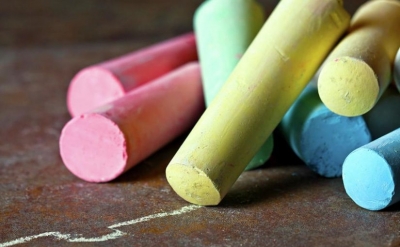
Have you ever wondered where the chalk comes from? Well, it originates from the shells of single-celled marine animals known as foraminifera and from the calcareous remains of single-celled algae called coccolithophores!
When foraminifera, coccolithophores and other organisms die, their remains sink to the bottom and accumulate as a fine-grained marine sediment known as ooze. These deposits, built up over many, many years, eventually consolidate into chalk rocks and give rise to chalk cliffs above sea level due to the movement of Earth. Such cliffs are found in many parts of the world.
So, chalk is nothing but the white or light grey, porous limestone composed mainly of calcium carbonate quarried from chalk cliffs. Chalk is used for making lime and Portland cement. Finely ground and purified chalk is used as a filler in a wide variety of materials, including ceramics, putty, cosmetics, crayons, plastics, rubber, paper, and paints.
Much of the early blackboard writing was done with pieces of natural chalk. But today blackboard chalk is made from gypsum or calcium sulphate manufactured from other sources of calcium carbonate. Gypsum chalk is the softest and writes smoothest; however, it produces more dust than natural chalk.
Picture Credit : Google




